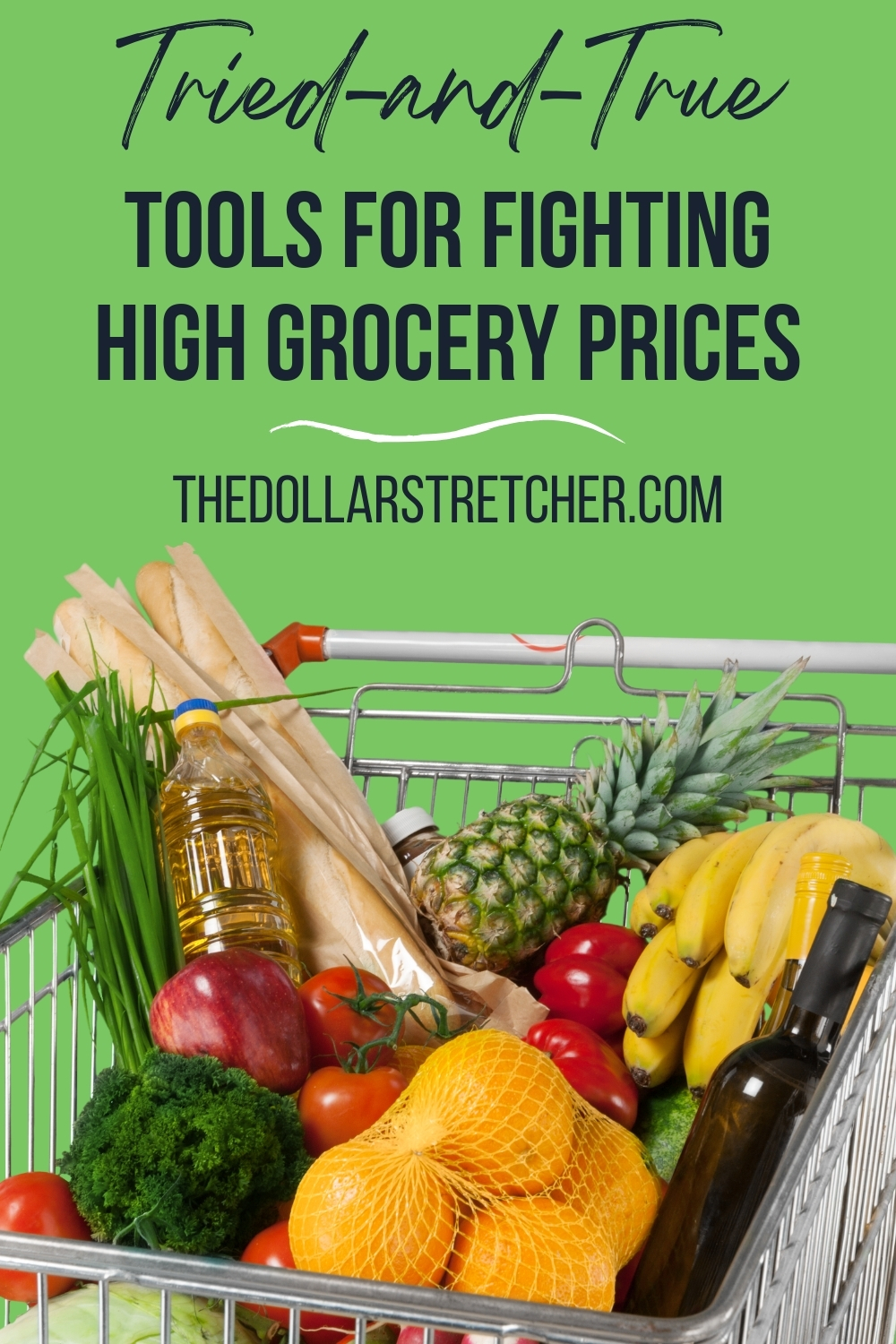Tried-and-True Tools for Fighting High Grocery Prices
If your food bills are approaching unaffordable, it might be time to get back to using some tried-and-true frugal food shopping tools that you may have stopped using somewhere along the way.
by Rose Scott

It seems like we’ve been waiting for some relief on grocery prices since before the pandemic. Unfortunately, there really aren’t any new grocery shopping tricks and tips that will magically lower your food bills. But getting back to some of the tried-and-true tools that frugal shoppers have used for years to save money may help you spend less until food prices come back down.
Tools for Fighting High Grocery Prices
Some of these tools will take up some of your time, but they can help you see the most significant grocery savings.
1. The Grocery Budget
Do you know how much you have in your overall budget to spend on groceries each week? What about specifically for meat, produce, snacks and other food budget line items?
Consider creating a food budget that designates how much you can spend each week on specific types of foods—or at least limit high-dollar categories. For instance, only allow $25 per week for meat or $15 per week for snack foods. Budgeting your food dollars can make it easier to find ways to save and allow you to buy more of less expensive items.
And once you have your grocery budget, stick to it.
Sign Up for Savings
Subscribe to get money-saving content by email that can help you stretch your dollars further.
Twice each week, you'll receive articles and tips that can help you free up and keep more of your hard-earned money, even on the tightest of budgets.
We respect your privacy. Unsubscribe at any time.
2. The Meal Plan
Begin your meal planning by determining what you have on hand that you can use to create a few meals. This will allow you to buy less at the store for the coming week. Then determine what additional meals you can make that will fit within your budget.
Planning meals within a budget can be tricky if you’ve never meal planned with a dollar limit in mind. However, you can use grocery flyers and apps to view sale items, get an idea of prices, and then plan meals around the best buys.
When planning your meals, avoid convenience foods if possible. Pre-packaged and convenience items are often more expensive than cooking from scratch.
3. The Price Book
Compare prices of the same item across different stores and brands whenever possible. A price book can help you keep track of the best prices.
You may be loyal to one store or specific brands, but if you do have easy access to multiple grocers, you’ll likely find the biggest savings by shopping from two or more different grocers and choosing the cheapest brands.
Also consider alternative food sources, such as farmers markets or co-ops that may have lower prices (and fresher produce).
4. Store Brands
Unless you find a great sale or a coupon for a name-brand item, generic or store brands are often cheaper than name brands and can be just as tasty. In some cases, they are the same product with nothing more than a different label or packaging.
5. Bulk Shopping
Buying in bulk isn’t always the cheapest option, but it often is. And that is why comparison shopping is so important. However, you may want to limit your bulk purchases to non-perishable goods. You don’t want to lose any of your savings to food waste.
6. The Shopping List
Once you have created your meal plan, make your grocery list. Make sure you have it on hand when you head to the store. And don’t buy anything that isn’t on the list.
If you tend to throw an extra item or two in your cart when shopping, you can avoid going over budget by leaving $10, or whatever amount, in the budget for impulse food purchases.
7. Coupons
Even though digital coupons have made the couponing process easier than ever, some people no longer bother with these small savings. However, if you have a really tight grocery budget, these small savings can help you save a little more so you can buy a little more.
Food Waste Is Especially Expensive Right Now
These tools for fighting high grocery prices will only help you save if you prevent or at least greatly minimize food waste. As much as you’re paying for some food items right now, throwing them in the garbage can be very expensive. The following articles can help you keep food waste in check:
Reviewed February 2025
Popular Articles

On After50Finances.com
- 9 Things You Need to Do Before You Retire
- You Didn’t Save Enough for Retirement and You’re 55+
- When Empty Nesters Reorganize and Declutter Their Home
- Reinventing Your Career in Your 50s or 60s
- What Mature Homeowners Should Know about Reverse Mortgages
- 2 Reasons to Collect Social Security Benefits As Soon As Possible


